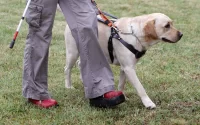Best training methods for dogs
In the dynamic world of canine companionship, effective training methods are the linchpin to unlocking the full potential of our four-legged friends. Whether you’re the proud owner of a sprightly puppy or a seasoned dog looking to learn new tricks, understanding the best training approaches can result in a harmonious relationship between you and your pet. This article delves into the top-notch strategies for dog training, covering everything from the foundational basics to advanced skills that will ensure your dog is the best-behaved on the block.
Unleashing Potential: Dog Training Basics
Table of Contents

Before embarking on a journey of dog training, it is critical to grasp the fundamentals. Training should always be consistent, with clear guidelines and routines set from the start. It’s essential to:
- Establish yourself as the leader: Dogs are pack animals that respond well to a clear hierarchy.
- Be patient and understanding: Training takes time, and each dog learns at their own pace.
- Utilize short, frequent training sessions: Dogs have short attention spans, so keeping sessions brief but regular is key.
- Keep things positive: Focus on rewarding good behavior rather than punishing the bad.
- Incorporate play into training: Making learning fun ensures your dog stays engaged.
- Understand your dog’s breed and temperament: Tailor your training to suit your dog’s natural inclinations and personality.
Positive Reinforcement: A Rewarding Approach

Positive reinforcement is a powerful tool in dog training, involving the addition of a pleasant stimulus to encourage good behavior. This technique reinforces what you want your dog to do, without resorting to fear or punishment. Key elements include:
- Treats: Offering a tasty snack as a reward for good behavior.
- Praise: Verbal affirmation and petting can be just as effective as treats.
- Toys and play: Sometimes a quick game is the best reward for your dog.
- Consistency: Reward the desired behavior every time to reinforce the learning.
- Timing: Rewards should be given immediately following the good behavior to create a clear association.
- Fade out rewards: Gradually reduce treats to ensure behaviors remain without continuous reinforcement.
Clicker Training: Shaping Behaviors Precisely

Clicker training is a form of positive reinforcement that uses a click sound to mark the exact moment a dog performs the correct behavior. This method allows for precise communication and is highly effective for teaching a variety of commands and tricks. When implementing clicker training:
- Introduce the clicker: Help your dog associate the click sound with a treat.
- Mark the behavior: Click at the precise moment your dog performs the desired action.
- Immediate reward: Follow the click with a treat to reinforce the behavior.
- Repeat: Consistency is crucial to solidify the behavior.
- Vary the rewards: Keep your dog guessing and eager to perform by varying treats and praise.
- Fade the clicker: Once the behavior is learned, the clicker can gradually be removed from the training routine.
Socialization Strategies: Fostering Good Etiquette

Socialization is a critical component of a well-rounded training program. It involves exposing your dog to a variety of environments, people, and other animals to ensure they are well-adjusted and behave appropriately. Effective socialization strategies include:
- Start early: Begin exposing your puppy to new experiences in a controlled way as soon as it’s safe.
- Positive encounters: Ensure all socialization experiences are pleasant and non-threatening.
- Gradual exposure: Don’t overwhelm your dog; introduce new experiences gradually.
- Diverse settings: Take your dog to different places to encounter various sights, sounds, and smells.
- Regular interaction: Encourage regular playdates with other dogs.
- Training classes: Group classes offer a structured setting for socialization.
Obedience Training: Commands for Canine Harmony

Obedience training lays the groundwork for a well-behaved pet, teaching them the rules of human society. Key commands that every dog should know include:
- Sit: The foundational command for further training.
- Stay: Teaches patience and self-control.
- Come: Essential for safety and calling your dog back to you.
- Heel: Maintains order during walks.
- Down: Helps manage excitability and jumping.
- Leave it: Prevents dogs from picking up or eating dangerous items.
Consistent practice of these commands fosters a respectful and attentive canine companion and strengthens the bond between pet and owner.
Advanced Training: Taking Skills to the Next Level

For owners and dogs who have mastered the basics, advanced training can provide mental stimulation and strengthen communication. Advanced training may include:
- Agility training: Navigating obstacle courses for physical and mental exercise.
- Trick training: Teaching fun and entertaining tricks that can impress friends and family.
- Service and therapy work: Training for specific roles to assist humans in need.
- Behavioral modification: Addressing and correcting specific behavioral issues.
- Off-leash training: Gaining reliable control when your dog is not restrained.
- Nose work: Engaging your dog’s natural scenting abilities in structured activities.
Engaging in advanced training requires patience, dedication, and often, the assistance of a professional trainer.
Comparison Table: Positive Reinforcement vs. Traditional Punishment-Based Methods
| Aspect | Positive Reinforcement | Traditional Punishment-Based |
|---|---|---|
| Motivation | Encourages with rewards | Discourages with punishment |
| Communication | Clear and precise | Can be confusing and fear-inducing |
| Relationship | Builds trust and enthusiasm | Can damage trust |
| Learning Pace | Often faster as it is enjoyable | Can be slower due to stress |
| Emotional Impact | Creates a happy and confident dog | May cause anxiety and fear |
| Long-Term Effectiveness | Behaviors are learned willingly and last | Behaviors may not be reliable when punishment is absent |
Dog training is not merely about teaching tricks or commands; it’s about nurturing a relationship of mutual respect and understanding between owner and pet. By employing the best training methods discussed in this article, you can ensure a fulfilling and joyful life together with your canine companion. Whether you’re new to dog training or looking to refine your skills, remember that patience, consistency, and positive reinforcement will always be the keys to success. Happy training!


